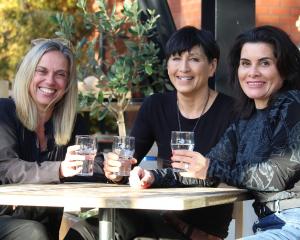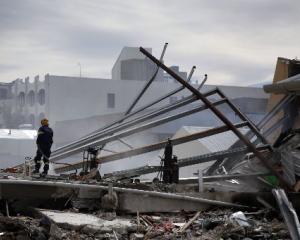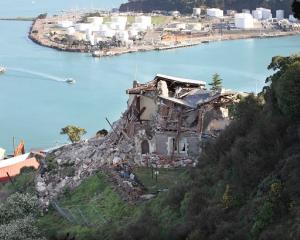Devastated families suffered further trauma yesterday as several violent aftershocks struck during the inquest into the deaths of the 106 people killed in the collapse of the Canterbury Television building on February 22.
A few minutes after the inquest stopped for lunch, family members of those killed ran screaming from the Riccarton Function Centre as a 5.5 magnitude aftershock shook the glass building.
The inquest resumed at 2.15pm only for those at the hearing to endure a magnitude 6 earthquake five minutes later.
Waikato coroner Gordon Matenga was to have held the inquest over three days, but yesterday's events so shocked participants that it was adjourned last night. No date for a resumption had been decided upon.
The inquest was told most of the fatal injuries in the CTV building were caused by crushing, asphyxiation and/or fire. Other deaths were deemed "undeterminable".
The deceased were identified using a combination of DNA, fingerprint and property comparisons.
Police concluded that all deaths being examined yesterday were directly caused by the earthquake that struck Canterbury at 12.51 on February 22.
Marcus Elliot acting for the families questioned the identification procedures in place in the hours following the February earthquake.
Detective Inspector Paul Kench told the court rescuers were "pulling people out as quickly as possible - one after the other - there was [no time for] scene examination".
Disaster victim identification (DVI) numbers were given some hours later as the DVI commander did not arrive in Christchurch until early on February 23, Det Insp Kench said.
The court was told in the early stages bodies were transported to the central police station and then to Christchurch Hospital until a temporary mortuary facility was set up at Burnham Military Camp on the outskirts of Christchurch.
The bodies were transported from the scene by both police and members of the public.
Mr Kench also confirmed the team involved in the DVI process was different from those involved in the recovery process.
Several of the deceased had multiple DVI numbers including Elizabeth Jane Grant (51), whose remains were assigned eight separate numbers due to the extent of her injuries. Her cause of death was undeterminable.
Susan Selway (50), of Christchurch, worked at the clinic on level 4 of the CTV building and the inquest was told she had texted her husband at 9.30am to ask him to pick her up at 5.45pm after work. At noon, she had an appointment with Pamela Maree Brien (55), who worked for the New Zealand Police child protection team at Papanui. Both women died from undeterminable injuries.
Didem Yaman (30), from Turkey, was a student at the University of Otago, Dunedin. She had made an appointment to visit Kyle Brandon Jack Midgely (27), a hair loss consultant, at the clinic at noon. She was visiting Sisi Xin (28), from China, who was studying at the Otago University human nutrition college in Cashel St. The three were found together in the collapsed CTV building. All died from crush injuries.
The inquest was told Dominic Joseph Gerard Bell (45), from Christchurch, a clinic employee, died from a major chest crush with asphyxia.
His sister asked the coroner that her brother's death be recorded as collapse of the building as well as a result of the earthquake.
"I have recorded it. It seems to me very appropriate," the coroner said.






